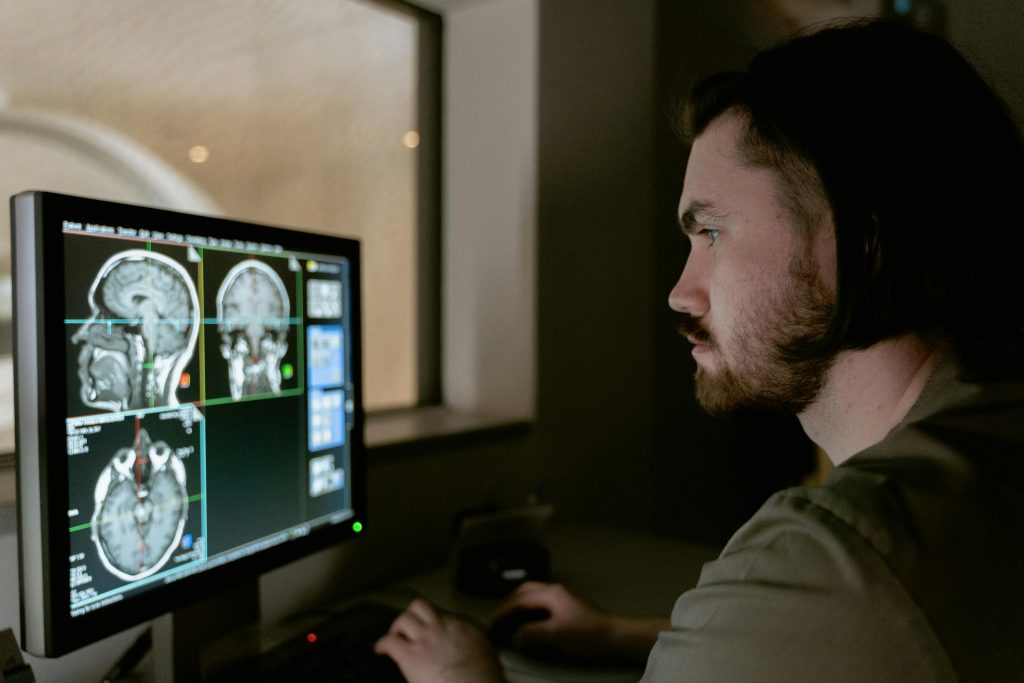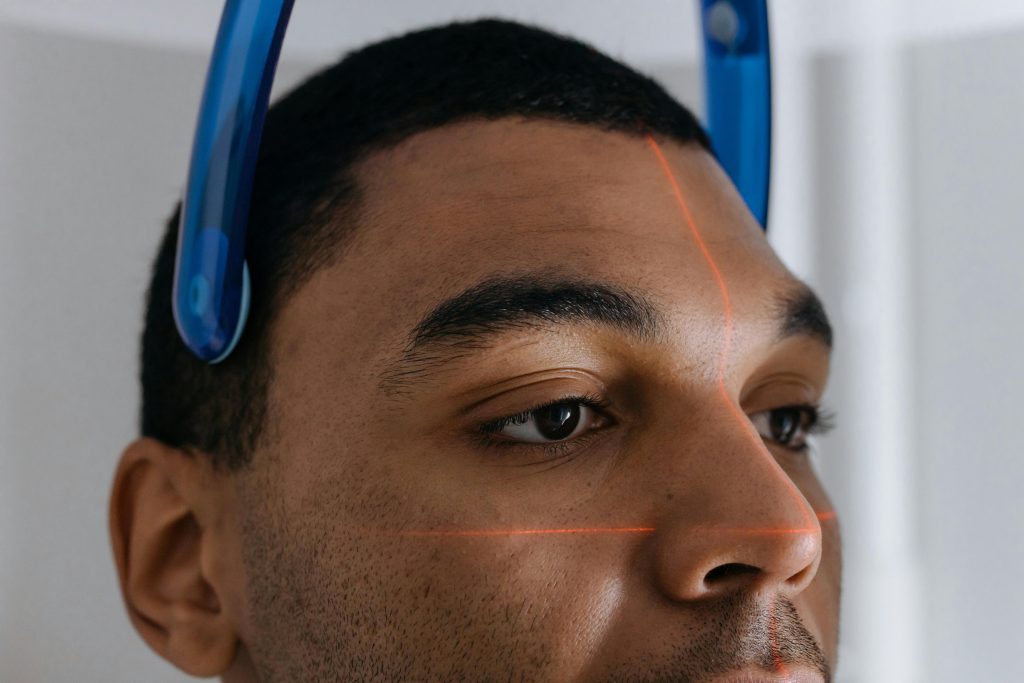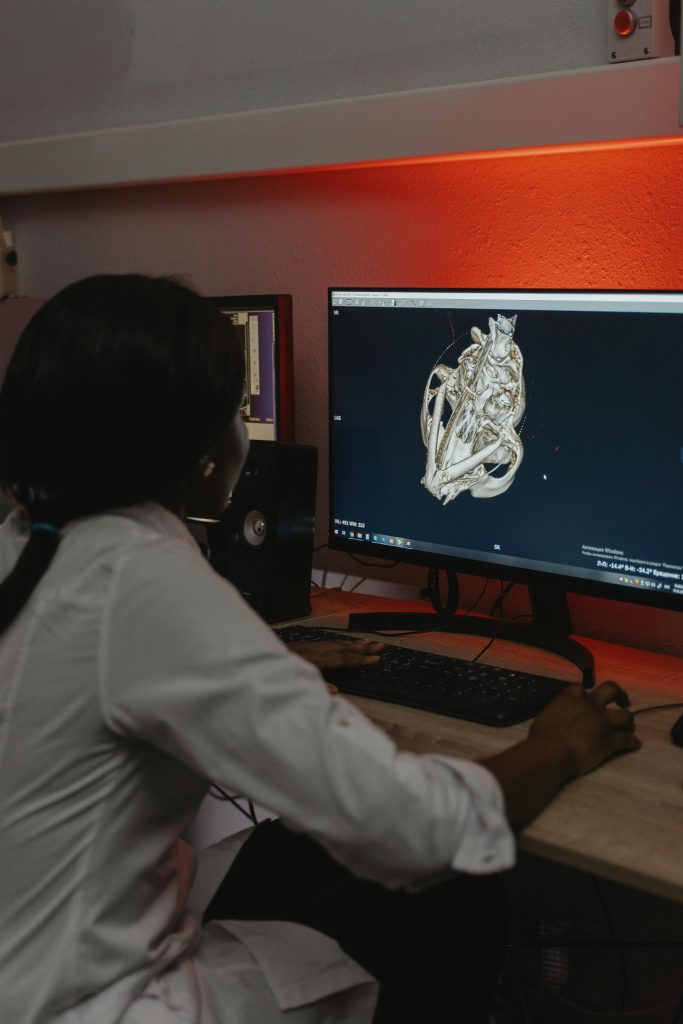Launch Your PhD in Brain Research: Fully Funded in Munich (IMPRS-TP 2025)

Are you a bright and ambitious graduate eager to delve into the fascinating world of the brain? Do you dream of conducting cutting-edge research in an international and collaborative environment, without the burden of tuition fees? Then, the International Max Planck Research School for Translational Psychiatry (IMPRS-TP) in Munich, Germany, is offering a fantastic opportunity: fully funded PhD scholarships starting in 2026!
This prestigious program provides exceptional training in basic, translational, and clinical neuroscience, making it an ideal launchpad for your career in brain research. With no tuition fees and full financial support including a monthly stipend, this is your chance to immerse yourself in a world-class scientific community in the vibrant city of Munich.
What Awaits You at IMPRS-TP?
The IMPRS-TP is a joint initiative of leading scientists from the Max Planck Institutes of Psychiatry and Biological Intelligence,1 along with the Ludwig Maximilian University (LMU) Munich and other renowned collaborators like the Helmholtz Center Munich and King’s College London. This collaboration creates a rich and interdisciplinary research landscape, offering PhD students unparalleled opportunities:
- World-Class Research Training: You’ll receive rigorous academic training combined with hands-on research across diverse fields, including molecular biology, genetics, neuroimaging, and clinical psychiatry.
- Fully Funded Positions: Say goodbye to tuition fees! The program offers fully funded PhD positions with a monthly stipend, allowing you to focus entirely on your research.
- Optional Residency Track for Medical Doctors: A unique feature of IMPRS-TP is its integrated pathway for medical doctors who wish to pursue their clinical residency alongside a PhD in neuroscience and psychiatry.
- Structured Curriculum: Benefit from a well-designed curriculum that includes core courses, workshops, and seminars, providing a strong foundation for your research.
- Interdisciplinary Research: Engage in research that bridges the gap between basic science and clinical application, working alongside experts in molecular neuroscience, electrophysiology, clinical psychiatry, epidemiology, and bioinformatics.
- State-of-the-Art Facilities: Gain access to cutting-edge laboratories and collaborate with globally renowned institutions, pushing the boundaries of brain research.
- International Environment: Become part of a vibrant and inclusive international community of talented students and leading researchers.
Who Should Apply?
IMPRS-TP welcomes applications from outstanding students holding a Master’s degree (or equivalent) or a Medical Degree in relevant fields such as:
- Biology, Human Biology
- Biochemistry, Biomedicine
- Neuroscience
- Pharmacy, Pharmacology
- Human Medicine, Veterinary Medicine, Dental Medicine2
Medical doctors with research experience are particularly encouraged to apply for the combined residency/PhD track.
Launch Your Research Career in Munich!
This fully funded PhD scholarship at IMPRS-TP in Munich represents an exceptional opportunity to launch your career in brain research. Imagine working at the forefront of neuroscience, contributing to groundbreaking discoveries, and building a strong network within a leading international research hub – all without financial constraints.
The application window for PhD positions starting in 2026 is open from August 15, 2025, with a deadline of October 31, 2025. Don’t miss this chance to take a significant step towards your research aspirations. Visit the official IMPRS-TP website to learn more about the program, specific research areas, and the application process.
Your journey into the fascinating world of brain research, fully funded in the heart of Munich, awaits!

The Enigmatic Universe Within: Just How Complicated is the Brain?
The human brain. Just three pounds of tissue, yet it holds the keys to our thoughts, emotions, memories, and everything that makes us who we are. For centuries, scientists have been trying to unravel its mysteries, and the more we learn, the more we realize just how incredibly complex this organ truly is. To say the brain is complicated is a profound understatement – it’s more like a universe contained within our skulls.
A Numbers Game That Boggles the Mind:
Let’s start with the sheer scale of things. The adult human brain is estimated to contain around 86 billion neurons, or nerve cells. To put that in perspective, that’s roughly the same number of stars in the Milky Way galaxy! But the complexity doesn’t stop there. Each of these neurons can form connections with thousands of other neurons, resulting in an astounding 100 trillion synapses – the points where these cells communicate. This intricate network allows for a mind-boggling amount of information processing and storage, estimated to be virtually limitless.
Imagine a piece of brain tissue the size of a grain of sand. Within that tiny speck reside around 100,000 neurons and 1 billion synapses. It’s a level of microscopic organization that defies easy comprehension.
A Symphony of Specialized Regions:
The brain isn’t a homogenous mass; it’s organized into distinct regions, each with specialized functions, working in concert like a finely tuned orchestra. Some of the major players include:
- The Cerebrum: The largest part of the brain, responsible for higher-level functions like thinking, learning, memory, language, and voluntary movement.1 Its outer layer, the cerebral cortex, is highly folded, increasing its surface area and processing power. Different lobes within the cerebrum (frontal, parietal, temporal, and occipital) handle specific tasks, from problem-solving to sensory processing and vision.
- The Cerebellum: Located at the back of the brain, beneath the cerebrum, the cerebellum plays a crucial role in motor control,2 coordination, balance, and even some aspects of learning.
- The Brainstem: Connecting the brain to the spinal cord, the brainstem controls vital autonomic functions like breathing, heart rate, and sleep-wake cycles. It also houses the pons and medulla oblongata, which regulate reflexes and relay information.
- The Limbic System: Deep within the brain lies this network of structures, including the amygdala (emotions), hippocampus (memory), and hypothalamus (hormone regulation). It’s the center of our emotions, motivations, and drives.
- The Thalamus: Acting as a relay station, the thalamus processes and transmits sensory information to the cerebral cortex.
Constant Communication at Lightning Speed:

Information within the brain travels at incredible speeds, up to 350 miles per hour. When a neuron is stimulated, it generates an electrical impulse that zips along its axon, triggering the release of chemical messengers called neurotransmitters at the synapses. These neurotransmitters then bind to receptors on neighboring neurons, passing the signal along. This complex electrochemical communication network allows for rapid and intricate processing of information that underlies everything we perceive, think, and do.
Plasticity: A Brain That Adapts:
Adding another layer of complexity is the brain’s remarkable plasticity – its ability to change and adapt throughout our lives. Neural connections can strengthen or weaken based on experience, and even new neurons can be formed in certain areas, like the olfactory system. This lifelong “construction site” allows us to learn new skills, form memories, and even recover partially from brain damage.
Still Unraveling the Mysteries:
Despite the incredible progress in neuroscience, many aspects of the brain remain a mystery. How exactly does consciousness arise from this complex network of cells? How are memories encoded and retrieved? What are the precise neural circuits underlying complex behaviors and mental illnesses? These are just some of the profound questions that continue to drive brain research.
The human brain is arguably the most complex structure known in the universe. Its staggering number of neurons and connections, the intricate organization of its regions, the rapid electrochemical communication, and its remarkable plasticity all contribute to a level of complexity that scientists are still striving to fully understand. Each new discovery only seems to reveal deeper layers of intricacy, reminding us that the universe within our skulls is a frontier ripe for exploration. The more we learn about the brain, the more we appreciate its incredible power and the delicate balance that allows us to experience the world and our place within it.

The Delicate Fortress: Understanding the Brain’s Vulnerability
The brain, the command center of our being, orchestrates everything from our simplest reflexes to our most complex thoughts. Encased within the seemingly impenetrable fortress of our skull, it’s easy to assume a robust resilience. However, the truth is that the brain, while remarkably protected, is an incredibly delicate organ, susceptible to damage in ways we might not always appreciate.
The Softness Within the Hard Shell:
Imagine the consistency of soft tofu or jelly. That’s a surprisingly accurate comparison to the texture of our brain tissue. This delicate composition is essential for the intricate network of neurons and synapses to function, allowing for rapid communication and complex processing. However, this softness also makes it vulnerable to physical trauma.
While the skull acts as a primary line of defense against external blows, it’s not a perfect shield. Sudden impacts or penetrating injuries can still transmit significant force to the brain tissue within. This force can cause the brain to:

- 撞击 (Coup and Contrecoup): Slam against the inside of the skull at the point of impact (coup) and then rebound to hit the opposite side (contrecoup), causing bruising and damage in multiple areas.
- 扭曲和拉伸 (Shearing): The different densities of brain tissue can cause layers to slide and stretch against each other during sudden acceleration or deceleration, leading to diffuse axonal injury (DAI), a widespread disruption of neural connections.
- 出血 (Hemorrhage): Blood vessels within or around the brain can rupture due to trauma, leading to hematomas (collections of blood) that can compress brain tissue and increase intracranial pressure.
Beyond Physical Trauma: Other Vulnerabilities:
The brain’s delicate nature extends beyond just its physical susceptibility. It’s also highly sensitive to:
- Oxygen Deprivation (Hypoxia): The brain has a very high metabolic rate and relies heavily on a constant supply of oxygen. Even brief periods of oxygen shortage can lead to significant and irreversible damage.
- Glucose Deprivation (Hypoglycemia): Similar to oxygen, glucose is the brain’s primary fuel source. Severely low blood sugar can impair brain function and cause damage.
- Toxins and Infections: The brain is protected by the blood-brain barrier, a selective filter that prevents many harmful substances from entering. However, certain toxins and infections can breach this barrier and cause inflammation, damage, and disrupt normal brain function.
- Pressure Changes: Increased pressure within the skull (intracranial pressure) due to swelling, bleeding, or fluid buildup can compress delicate brain tissue and restrict blood flow, leading to further damage.
The Brain’s Protective Mechanisms:
Despite its inherent delicacy, the brain has evolved several remarkable protective mechanisms:
- 脑脊液 (Cerebrospinal Fluid – CSF): This clear fluid surrounds the brain and spinal cord, acting as a cushion to absorb shocks and protect against minor impacts. It also helps to regulate pressure and remove waste products.
- 脑膜 (Meninges): Three layers of protective membranes (dura mater, arachnoid mater, and pia mater) surround the brain, providing structural support and further cushioning.
- 血管的自我调节 (Cerebral Autoregulation): Blood vessels in the brain can constrict or dilate to maintain a stable blood flow despite fluctuations in blood pressure, ensuring a consistent supply of oxygen and nutrients.
- 神经可塑性 (Neuroplasticity): While damaged brain tissue often cannot regenerate, the brain has an amazing ability to reorganize itself by forming new neural connections. This plasticity is crucial for recovery after injury.
Respecting the Delicate Fortress:
Understanding the brain’s delicate nature underscores the importance of protecting it. Simple measures like wearing helmets during sports or while riding bikes, using seatbelts in cars, and taking precautions to prevent falls can significantly reduce the risk of brain injury. Recognizing the signs of oxygen deprivation, maintaining stable blood sugar levels, and being aware of potential toxins and infections are also crucial for preserving brain health.
While the brain is a powerful and resilient organ, its fundamental delicacy requires our constant respect and care. By understanding its vulnerabilities and appreciating its protective mechanisms, we can take better steps to safeguard this incredible and essential part of ourselves.
RELATEDThe Delicate Fortress: Understanding the Brain’s Vulnerability
The brain, the command center of our being, orchestrates everything from our simplest reflexes to our most complex thoughts. Encased within the seemingly impenetrable fortress of our skull, it’s easy to assume a robust resilience. However, the truth is that the brain, while remarkably protected, is an incredibly delicate organ, susceptible to damage in ways we might not always appreciate.
The Softness Within the Hard Shell:
Imagine the consistency of soft tofu or jelly. That’s a surprisingly accurate comparison to the texture of our brain tissue. This delicate composition is essential for the intricate network of neurons and synapses to function, allowing for rapid communication and complex processing. However, this softness also makes it vulnerable to physical trauma.
While the skull acts as a primary line of defense against external blows, it’s not a perfect shield. Sudden impacts or penetrating injuries can still transmit significant force to the brain tissue within. This force can cause the brain to:
- 撞击 (Coup and Contrecoup): Slam against the inside of the skull at the point of impact (coup) and then rebound to hit the opposite side (contrecoup), causing bruising and damage in multiple areas.
- 扭曲和拉伸 (Shearing): The different densities of brain tissue can cause layers to slide and stretch against each other during sudden acceleration or deceleration, leading to diffuse axonal injury (DAI), a widespread disruption of neural connections.
- 出血 (Hemorrhage): Blood vessels within or around the brain can rupture due to trauma, leading to hematomas (collections of blood) that can compress brain tissue and increase intracranial pressure.
Beyond Physical Trauma: Other Vulnerabilities:
The brain’s delicate nature extends beyond just its physical susceptibility. It’s also highly sensitive to:
- Oxygen Deprivation (Hypoxia): The brain has a very high metabolic rate and relies heavily on a constant supply of oxygen. Even brief periods of oxygen shortage can lead to significant and irreversible damage.
- Glucose Deprivation (Hypoglycemia): Similar to oxygen, glucose is the brain’s primary fuel source. Severely low blood sugar can impair brain function and cause damage.
- Toxins and Infections: The brain is protected by the blood-brain barrier, a selective filter that prevents many harmful substances from entering. However, certain toxins and infections can breach this barrier and cause inflammation, damage, and disrupt normal brain function.
- Pressure Changes: Increased pressure within the skull (intracranial pressure) due to swelling, bleeding, or fluid buildup can compress delicate brain tissue and restrict blood flow, leading to further damage.
The Brain’s Protective Mechanisms:
Despite its inherent delicacy, the brain has evolved several remarkable protective mechanisms:
- 脑脊液 (Cerebrospinal Fluid – CSF): This clear fluid surrounds the brain and spinal cord, acting as a cushion to absorb shocks and protect against minor impacts. It also helps to regulate pressure and remove waste products.
- 脑膜 (Meninges): Three layers of protective membranes (dura mater, arachnoid mater, and pia mater) surround the brain, providing structural support and further cushioning.
- 血管的自我调节 (Cerebral Autoregulation): Blood vessels in the brain can constrict or dilate to maintain a stable blood flow despite fluctuations in blood pressure, ensuring a consistent supply of oxygen and nutrients.
- 神经可塑性 (Neuroplasticity): While damaged brain tissue often cannot regenerate, the brain has an amazing ability to reorganize itself by forming new neural connections. This plasticity is crucial for recovery after injury.
Respecting the Delicate Fortress:
Understanding the brain’s delicate nature underscores the importance of protecting it. Simple measures like wearing helmets during sports or while riding bikes, using seatbelts in cars, and taking precautions to prevent falls can significantly reduce the risk of brain injury. Recognizing the signs of oxygen deprivation, maintaining stable blood sugar levels, and being aware of potential toxins and infections are also crucial for preserving brain health.
While the brain is a powerful and resilient organ, its fundamental delicacy requires our constant respect and care. By understanding its vulnerabilities and appreciating its protective mechanisms, we can take better steps to safeguard this incredible and essential part of ourselves.